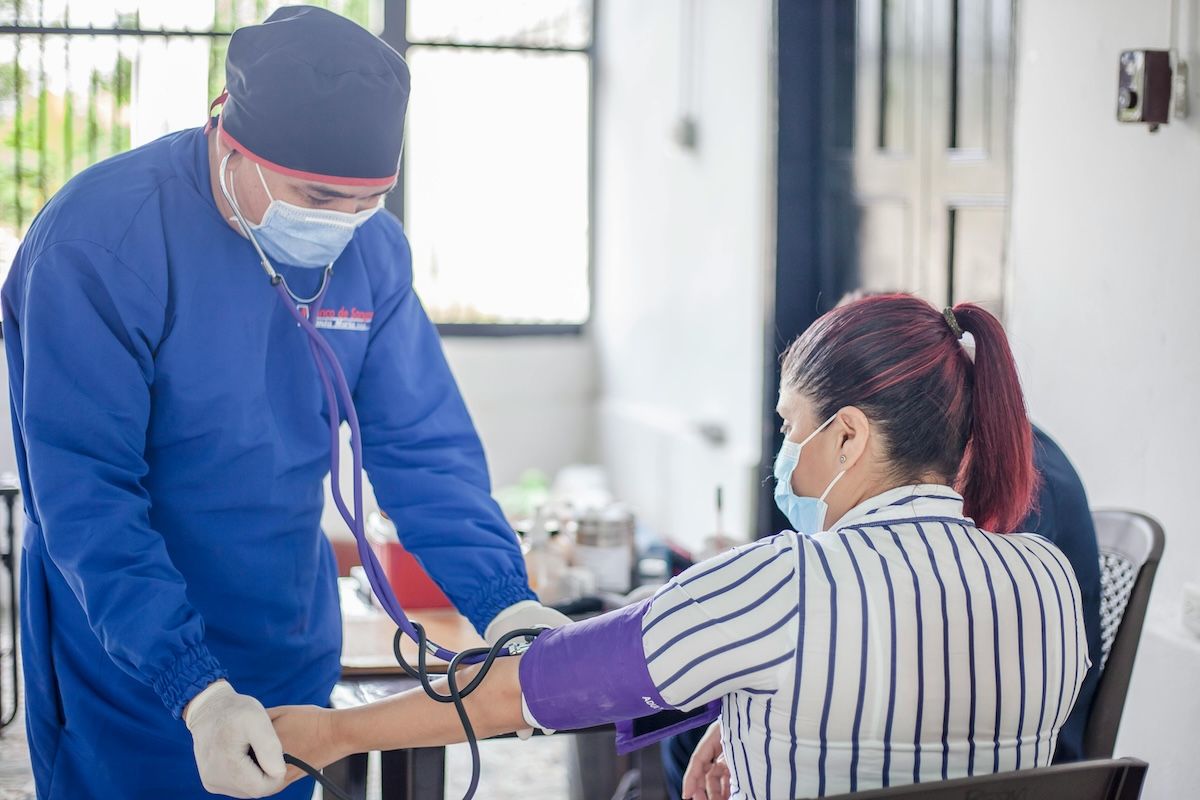Differentiated Instruction: Definition, Examples & Strategies for the Classroom for 2026
That all students acquire the education they need is the foremost goal of any school system. Administrators and educators do their best in this regard. But classrooms today are full of diversity—there may be those who have special educational needs, those who are rather advanced compared to their peers, and those who struggle sometimes while excelling at other times.
With the one-size-fits-all approach that is normal among schools, it is not likely that the needs of every student are met. Therefore, students who may have struggled would have become unmotivated, and learners who were not challenged enough become less engaged. This is why the differentiated instruction approach was devised—to address the variety of needs of students in a single classroom setting.
Below, we define the differentiated instruction meaning, present what is it in education, its characteristics and strategies, how it is used in the classroom, how teachers assess students with a differentiated pathway, and the differentiated instruction benefits.
Differentiated Instruction for 2026 Table of Contents
- What is differentiated instruction?
- Differentiated Instruction Strategies
- How can educators enhance their proficiency in differentiated instruction?
- How can further education enhance differentiated instruction practices?
- Differentiated Instruction in the Classroom
- Differentiated Instruction for Gifted Students
- Differentiated Instruction Assessment
- Technology Integration
- How Does Differentiated Instruction Influence Long-Term Academic Achievement?
- How Can Differentiated Instruction Enhance Career Readiness?
- How Can School Leadership Empower Differentiated Instruction?
What is differentiated instruction?
The differentiated instruction definition refers to it as an approach to education whereby teachers make changes to the curriculum and the way they teach to maximize the learning of every student in the class (IRIS Center, 2021). Unlike what some may think, this is not a singular strategy but a framework that educators can utilize.
Carol Ann Tomlinson also notes that in differentiated instruction, the teacher anticipates the varying levels of students’ interests, readiness, and learning profiles. Subsequently, they can provide diverse ways of learning, enabling students to learn without being anxious because academic tasks are too difficult for them or being unmotivated because assignments are not challenging for them (ASCD, 2011).
However, it must be noted that the differentiation definition in education is not the same as the classroom definition of individualized instruction.
Characteristics of Differentiated Instruction
But how can teachers, students, administrators, and parents be assured that the approach educators are using is indeed based on the principles of differentiated instruction? The following are key ideas about differentiation that can guide teachers, rather than a single formula for how to go about differentiation (Tomlinson, 2014).
1. The teacher focuses on the essentials. The educator picks out the most important information for learners to "recall, understand, and be able to do in a given domain."
2. The teacher attends to student differences. By attending to human differences, the teacher is better able to help learners focus on their common needs.
3. Assessment and instruction are inseparable. Assessment should be continual rather than a diagnostic performed at the end of a unit.
4. The teacher modifies content, process, and products. The educator can go about this guided by assessment data.
5. All students participate in respectful work. Carol Ann Tomlinson, in her book, The Differentiated Classroom: Responding to the Needs of All Learners (2014), pointed out that “It is not standardization that makes a classroom work. It is a deep respect for the identity of the individual. A teacher in a differentiated classroom embraces at least the following four beliefs.
- Respect the readiness level of each student.
- Expect all students to grow, and support their continual growth.
- Offer all students the opportunity to explore essential understandings and skills at degrees of difficulty that escalate consistently as they develop their understanding and skill.
- Offer all students tasks that look—and are—equally interesting, equally important, and equally engaging."
6. The teacher and students collaborate in learning. Teachers may be the main architects of learning, but students also need to participate in designing and building lessons.
7. The teacher balances group and individual norms. The teacher strikes a balance between what is expected of the group and the individual.
8. The teacher and students work together flexibly. Both educators and learners have to be flexible in using materials and the pacing of lessons.
Differentiated Instruction Strategies
As the instruction definition implies, one way to define differentiated instruction is by describing it as an approach rather than a strategy. As such, teachers can execute several differentiated instruction strategies that work in their particular settings rather than sticking to one.
One of the most effective ones that can work in any setting is by working with small groups of students. With proximity, the teacher can work closely with individuals. In this way, educators can easily tell whether each individual is ready to move to the next phase or whether they are still having difficulty grasping the lesson (Wu, 2013 in Gentry, Sallie, & Sanders, 2013).
Allowing students to find their learning stations or assigning them to specific nooks is another strategy utilized by educators in differentiated instruction. These would be the places where they can receive guidance on how to proceed with tasks, how to ask for assistance, and what to do once they are finished with their work (Gentry, Sallie, & Sanders, 2013).
Another strategy that might already be familiar is conferencing, where teachers converse with students to follow up on their progress. Lecturers ask questions, listen to the student, and point out positives in what they are doing while providing advice on what they can do moving forward. Teachers may also prefer to devise tiered activities—the foundation of the activity is the same for all students but varies in the complexity, the level of abstractness, and how open-ended they are.
It is worth noting that a literature review of 144 studies involving 80,000 students found that teachers hold more influence over students when it comes to motivation. Thus, educators can capitalize on differentiated instruction to drive students to be more active in their studies, which is just one of the benefits of differentiated instruction. But in order to do so, they must meet three psychological needs: competency, belonging, and autonomy.

How can educators enhance their proficiency in differentiated instruction?
Empowering educators to implement differentiated instruction effectively requires targeted professional development and continuous learning. Structured training programs, specialized workshops, and collaborative peer networks provide teachers with evidence-based strategies to modify curriculum and assessment techniques. These initiatives focus on practical approaches to curriculum adaptation, formative assessment methods, and the integration of digital tools to tailor instruction to diverse learner profiles. Institutions can further support teacher growth by offering accessible degree programs that emphasize pedagogical best practices, such as those found in easy associate degrees. Additionally, mentorship and continuous feedback from experienced practitioners enable educators to refine their skills and respond effectively to the dynamic needs of their classrooms.
How can further education enhance differentiated instruction practices?
Pursuing advanced education provides educators with comprehensive insights into data-driven strategies, modern pedagogical theories, and research-backed methodologies that refine differentiated instruction. Specialized academic programs offer practical tools for curriculum adaptation and innovative assessment techniques, empowering teachers to develop individualized learning pathways that respond effectively to diverse student needs. For educators aiming to elevate their classroom practices, obtaining an advanced degree can serve as a catalyst for sustained professional growth, as exemplified by programs such as cheapest easiest masters degree, which focus on integrating theory with practical application in real-world educational settings.
Differentiated Instruction in the Classroom
Applying differentiated instruction strategies can be a challenge for educators, especially for those who have to deal with classes that have 20 students or more. Still, there are many ways to go about it despite certain limitations.
Weselby (2014) suggests that to apply differentiated instruction in the classroom, educators can design activities according to the content of the lesson. Another approach put forward by the author is to provide guidance through the learning process. To do so, educators can prepare materials that are appropriate to students’ learning styles. Teachers can also differentiate the product, which is what the students do to demonstrate their mastery of the topic. Rather than just giving tests, they can offer options such as writing a report, creating an organizer or a visual flow of the lesson, delivering an oral report, and putting up a show based on the lesson. Lastly, teachers can apply differentiated instruction by modifying learning environments.
One approach would be grouping. By segregating students according to their capabilities, teachers can give instructions that are aligned with the students’ needs. On a similar note, educators can also create intermingled groups to facilitate collaboration. In this way, students who have a better grasp of the lesson can help their classmates who may be struggling (Cole, 2019).
Another way to implement differentiated instruction in the classroom is to have them work on a broad spectrum of tasks that have the same goal. In doing so, students can choose a task that is more suited to their learning profile (Lynch, 2021).
In one literature review by Bondie, Dhanke, and Zusho (2019), it was found that 64% of studies of teacher practices used the definition of differentiated instruction of Carol Ann Tomlinson. As such, it was used to justify diverse approaches where educators would group students according to their reading levels and utilize a broad array of classroom activities, including activities the students selected themselves. This shows that the framework is used consistently in the classroom and embraces teachers’ endeavors to meet what they see as their students’ needs.
Meanwhile, 11% referred to Renzulli as the foundation of their differentiation approach. This instruction model is designed mostly to serve students who have advanced abilities or those who are considered gifted or talented.
And others cite a wide array of researchers who proposed other differentiated instruction frameworks that focus on other aspects.
Differentiated Instruction Examples
These approaches, along with many others, have seen successes inside the classroom. There are differentiated instruction examples that demonstrate this. For instance, one third-year primary teacher discussed a story with a small group of four pupils. This group is composed of students who struggled with comprehension, which included two English learners. The teacher helped the students engage with the text by helping them find facets of it that are relatable. She initiated conversations wherein the learners can share related experiences as in the story. By connecting personal experiences with the text and by using open-ended questions, the teacher was successful in engaging the learners to participate.
The same teacher organized different literacy centers as well. These included magnetic word building, literature response writing in students’ journals, browsing of books appropriate to learners’ levels, reading with a partner for fluency, and word-study practice using a computer.
These centers provided students with differentiated learning experiences. They visited these centers in rotation and some did so several times more than others to give them additional time for practice.
This same educator created groupings of students, too. She assigned texts that are suitable for the reading levels and comprehension for each group. The previously mentioned group of students were able to read an assigned book 99% by themselves, although they needed assistance for thorough understanding. Meanwhile, other groups had their own selection of books that were challenging for their reading levels.
And as she understood that each individual in her class learned at a different pace, she constantly assessed their progress and used the data from those evaluations to rearrange groupings as needed (Watts-Taffe, et al., 2012).
All the above are from the perspective of an educator. But what do students think of differentiated instruction? The paper by Lawson, Diack, and Pablico (2017) offers insights.
Differentiated Instruction for Gifted Students
To define differentiation in education is to ensure that every student in a grade level is able to make progress in their learning. This is to ensure that those who struggle can keep up and those who do not remain challenged and engaged in classes.
The latter is especially true for gifted and talented students. Even if they are in a regular class, they need to have a more demanding curriculum to stimulate them. However, Munro (2012) pointed out that this may be beyond the scope of responsibilities of a regular teacher. In fact, 3.6 million gifted students are being overlooked. Although students of Asian descent, Caucasian heritage, and higher-income families have been identified as gifted, this is only showing one thing: a startling inequality. Indeed, research shows that two-thirds to three-quarters of gifted African-American learners are neglected (Dreilinger, 2019).
Still, there are ways that educators can help close the inequality gap by employing differentiated instruction to identify gifted students and to further the abilities of talented students who have already been identified. Munro (2012) cited a report that listed 18 ways the school can help these students, which the author grouped into seven categories.
Among these is the most common strategy to enable gifted students to receive instruction suited to their level: grade-skipping or acceleration, whether full or partial.
Another method is to have a compacted curriculum. This means that the curriculum is modified to reduce or remove introductory lessons or activities. Instead, students are to be acquainted directly with the more complex parts of the curriculum.
Schools and teachers can provide curriculum telescoping as well. This entails teaching gifted students at a faster pace. At the same time, they are placed in a higher grade.
Other approaches to differentiated instruction for gifted students are mentoring, extra-curricular programs and correspondence courses, self-paced instruction, and advanced credit.
Of course, parents need to be attentive to the needs of their gifted children as well. They can receive tips from the school or use online resources for talented students.

Differentiated Instruction Assessment
Differentiated instruction assessment is distinctive from regular evaluation. In normal classroom settings, the teacher would have a product (quiz, project, or similar) to determine the depth of understanding of students of the unit discussed.
Watson (2020) discussed that “The choice is key to the process." Therefore, students are given options on how they will demonstrate understanding. In the case of visual learners, they may choose to create visual art or similar and kinesthetic learner may choose to show their understanding through movement.
Moreover, assessment in differentiated instruction approaches may consider the differing levels of understanding of each student. These would include their current comprehension of a topic, their individual learning profiles, motivation and engagement, interests and talents, and their prior experiences in learning (NSW Education Standards Authority, 2021).
And similar to teaching students with a differentiated approach, there are also principles of differentiated instruction assessment, as well as certain considerations.
- data collection throughout the teaching and learning process
- evidence-based identification of students’ strengths and needs
- utilizing assessment results to guide differentiated teaching
- providing students with choices on how to demonstrate understanding, knowledge, and skills
- taking into account what kind of materials can best help students
- one-on-one conversations for feedback to guide students on how to improve their learning
- giving students opportunities to challenge themselves with material and activities suitable to their level
- accommodating students through flexible assessment
When it comes to assessments, there are considerations to be made as well. In particular, these could be the nature of the test instruments, the feedback, and the involvement of students in the teaching, learning, and evaluation processes.
What Is the Impact of Differentiated Instruction on Educational Equity?
Differentiated instruction can foster educational equity by aligning learning experiences with the diverse cultural, cognitive, and socio-economic backgrounds of students. When educators adjust curricula to address varying strengths and challenges, the approach helps reduce achievement gaps and supports inclusive classroom environments without favoring a particular group. This tailored teaching framework also encourages mutual respect and collaborative learning while ensuring that underrepresented or struggling students receive the support they need to progress academically. For educators seeking additional credentials to lead innovative instructional practices, consider exploring programs such as "What is the shortest degree to get?".
How can technology be integrated into differentiated instruction effectively?
In today’s digital age, technology offers a wide array of tools that can enhance the implementation of differentiated instruction. By utilizing technology in the classroom, educators can provide personalized learning experiences tailored to individual student needs and preferences. Here are some ways in which technology can support differentiated instruction:
- Adaptive Learning Platforms: These platforms adjust the difficulty and pace of lessons based on student performance, allowing learners to progress at their own speed. Programs such as Khan Academy or DreamBox use algorithms to present content that matches each student’s skill level, ensuring that advanced students are challenged while those who need more support receive it.
- Interactive Learning Tools: Digital tools like interactive simulations, virtual labs, and gamified learning platforms can cater to various learning styles. These tools can be particularly effective for visual and kinesthetic learners, as they provide engaging ways to explore content beyond traditional methods.
- Learning Management Systems (LMS): Systems like Google Classroom or Blackboard allow teachers to assign different tasks to students based on their readiness levels or learning profiles. Teachers can upload customized resources, provide individual feedback, and monitor student progress in real-time.
- Multimedia Resources: By incorporating videos, podcasts, and digital textbooks, educators can offer students multiple ways to access content. This variety supports auditory, visual, and reading/writing learners, allowing them to choose the format that best suits their learning preferences.
- Collaboration Tools: Technology facilitates group work by allowing students to collaborate digitally, even outside of the classroom. Tools like Google Docs or Microsoft Teams enable students to work together on projects, share ideas, and provide peer feedback, fostering a more collaborative learning environment.
- Formative Assessment Tools: Teachers can use digital quizzes, polls, and feedback forms to assess student understanding on an ongoing basis. Platforms such as Kahoot! or Quizizz offer fun, engaging ways to check for comprehension and tailor future lessons accordingly.
How Can Differentiated Instruction Be Adapted for Remote and Blended Learning Environments?
In remote and blended settings, differentiated instruction requires intentional use of digital platforms and flexible strategies to personalize learning. Educators can employ virtual breakout rooms, interactive online tools, and cloud-based resources to create diverse learning pathways tailored to individual student profiles. Adaptive learning management systems facilitate continuous formative assessments and real-time feedback, ensuring that instruction remains responsive to varied learning paces. Leveraging research-backed digital pedagogy, teachers can design collaborative projects and multimedia assignments that align with both academic standards and students’ technological proficiencies. For educators interested in deepening their expertise in innovative instructional design, pursuing an advanced degree—such as a doctorate degree without dissertation—can offer valuable insights into scalable, research-driven practices.
How Does Differentiated Instruction Influence Long-Term Academic Achievement?
Differentiated instruction not only addresses immediate classroom needs but also builds skills that support enduring academic and professional success by fostering independent learning, critical analysis, and adaptive problem-solving. Over time, students exposed to personalized learning environments tend to develop greater self-regulation and resilience, which are vital for higher education pursuits and career development. Moreover, the cumulative benefits of differentiated strategies can contribute to readiness for further studies and specialized training, such as 6 month certificate programs, that enhance professional credentials and open new career pathways.
How Can Differentiated Instruction Enhance Career Readiness?
Differentiated instruction extends beyond academic achievement by cultivating skills that are directly applicable to the workforce. It tailors learning experiences to nurture critical thinking, problem-solving, and adaptive communication—competencies essential for a smooth transition into varied professional environments. Through strategically designed project-based assignments and career-integrated learning modules, educators can bridge classroom concepts with real-world applications, preparing students for both higher education and vocational pursuits, including trade school careers.
How Can School Leadership Empower Differentiated Instruction?
Effective leadership is essential for creating an environment where differentiated instruction can flourish. School administrators can establish supportive frameworks that provide educators with access to ongoing professional development, tailored resources, and collaborative opportunities to refine their instructional strategies. By leveraging data-driven decision-making and fostering a shared vision of inclusive excellence, leaders can ensure that teaching practices remain adaptive and responsive to student needs. Moreover, instituting partnerships with academic institutions can expand teacher expertise—initiative programs such as easy bachelor degree exemplify avenues for professional growth and institutional advancement.
The Challenge of Differentiating
By having a deeper understanding of the differentiation in education definition and what it encompasses, we become more aware that differentiating can be a challenge to educators. It takes more time and effort to prepare to differentiate instruction for even a small group of students. And not all educators are equipped with the knowledge of strategies to apply the differentiated approach in their classes. Because of that, there are teachers who fall back on regular instruction.
But while it may be difficult, it does yield results. Students who are less engaged because they do not find the lessons and the activities challenging become more participative. And learners who are seemingly lagging behind would improve their performance.
It may not be possible to apply differentiation all the time, especially for those who are not yet too familiar with it. However, what is important is to practice it often to incorporate it in the usual teaching procedure. And with time, it can become second nature to the educator.
Meanwhile, the quest to improve learning is taking on many dimensions, including the incorporation of available and emerging technologies. For astute educators, a glimpse of the latest interactive learning trends is a good way to start.
Key Insights
- Personalized Learning Approach: Differentiated instruction tailors educational experiences to meet individual student needs, addressing the diversity in classroom learning abilities and styles.
- Inclusive and Respectful: The approach ensures all students participate in meaningful and challenging work, fostering a respectful and engaging learning environment.
- Assessment Integration: Continual assessment is integral, allowing educators to modify content, process, and products based on ongoing evaluation of student progress.
- Flexible Strategies: Teachers employ various strategies such as small group work, learning stations, and tiered activities to effectively implement differentiated instruction.
- Support for Gifted Students: Differentiated instruction also caters to gifted students through methods like curriculum compacting, acceleration, and advanced credit, ensuring they remain challenged and engaged.
- Collaboration and Flexibility: Successful differentiated instruction involves collaboration between teachers and students and requires flexibility in using materials and pacing lessons.
FAQ
- What is differentiated instruction? Differentiated instruction is an educational approach where teachers adjust the curriculum and their teaching methods to meet the diverse needs of all students in the classroom. It aims to maximize learning for every student by providing multiple pathways for understanding and mastery.
- How do teachers implement differentiated instruction in the classroom? Teachers implement differentiated instruction by designing activities according to students' readiness, interests, and learning profiles. Strategies include small group work, learning stations, tiered activities, and offering various options for students to demonstrate their understanding.
- What are the key characteristics of differentiated instruction? Key characteristics include focusing on essential content, attending to student differences, integrating assessment and instruction, modifying content, process, and products, ensuring all students participate in respectful work, and fostering collaboration between teachers and students.
- How does differentiated instruction benefit students? Differentiated instruction benefits students by providing a more personalized learning experience, increasing engagement and motivation, improving critical thinking and problem-solving skills, and catering to individual learning needs and styles.
- How are gifted students supported through differentiated instruction? Gifted students are supported through strategies like grade-skipping, curriculum compacting, telescoping curriculum, mentoring, and advanced credit. These methods ensure that gifted students remain challenged and engaged in their learning.
- What role does assessment play in differentiated instruction? Assessment in differentiated instruction is ongoing and integral. It involves collecting data throughout the learning process, identifying students' strengths and needs, providing feedback, and offering choices for students to demonstrate their understanding.
- What are some challenges of implementing differentiated instruction? Challenges include the time and effort required for preparation, the need for teachers to be equipped with appropriate strategies, and the difficulty of applying differentiation consistently in large or diverse classrooms. However, the benefits of increased student engagement and improved performance make it worthwhile.
- How can teachers begin incorporating differentiated instruction into their teaching? Teachers can start by understanding their students' individual needs and learning profiles, using flexible grouping, offering various types of assessments, and gradually integrating differentiated activities into their lessons. Continuous practice and reflection will help make differentiation a natural part of their teaching process.
References:
- ASCD. (2011). What is differentiated instruction and why differentiate? Professional Development Online | ASCD.
- Bureau, J. S., Howard, J. L., Chong, J. X., & Guay, F. (2021). Pathways to student motivation: A meta-analysis of antecedents of autonomous and controlled motivations. Review of Educational Research, 003465432110424.
- Cole, K. (2019, May 17). Differentiated instruction: Definition, examples, and strategies. Schoology.
- Dreilinger, D. (2019, November 26). States lag in identifying gifted students, new study finds. The Hechinger Report.
- Gentry, R., Sallie, A. P., & Sanders, C. A. (2013, November). Differentiated instructional strategies to accommodate students with varying needs and learning styles [Paper presentation]. The Urban Education Conference, Jackson, Mississippi.
- IRIS Center. (2021). Page 1: Defining differentiated instruction. Peabody College Vanderbilt University.
- Lynch, M. (2020, January 28). How to implement differentiated instruction in your classroom. The Edvocate.
- Munro, J. (2012, August). Effective strategies for implementing differentiated instruction [Paper presentation]. School improvement: What does research tell us about effective strategies?, Melbourne, Australia.
- NSW Education Standards Authority. (2021). Differentiated assessment. NSW Government.
- Pablico, J., Diack, M., & Lawson, A. (2017). Differentiated instruction in the high school science classroom: Qualitative and quantitative analyses. International Journal of Learning, Teaching and Educational Research, 16(7), 30-54.
- Tomlinson, C. A. (2014). The differentiated classroom: Responding to the needs of all learners. ASCD.
- Watson, S. (2020, January 21). Differentiated instruction and assessment. ThoughtCo.
- Watts-Taffe, S., Barbara Laster, B., Broach, L., Marinak, B., McDonald Connor, C., & Walker-Dalhouse, D. (2012). Differentiated instruction: Making informed teacher decisions. The Reading Teacher, 66(4), 303-314.
- Weselby, C. (2014, October 1). What is differentiated instruction? Examples of how to differentiate instruction in the classroom. Concordia Online Education.


































